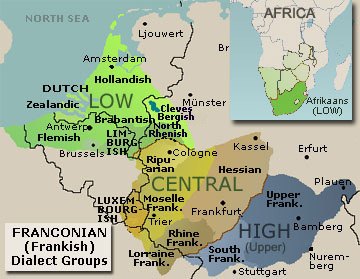
- #LOW GERMAN GRAMMAR CODE#
- #LOW GERMAN GRAMMAR TV#
Plautdietsch (in Mennonite communities). Stellingwerfs (in Ooststellingwerf and Weststellingwerf, in Friesland)ĭialects in Canada and the United States:. With strong influences from other languages and dialects:. East Frisian Low Saxon, or Emslandic (in western Lower Saxony). However, most Low Saxon dialects are thought to be descended from, or to have been strongly influenced by Old Saxon.ĭialects of Lower German in northern Germany: Note that divisions between subfamilies of Germanic are rarely precisely defined most form continuous clines, with adjacent dialects being mutually intelligible and more distantly separated ones being less so. There are plans to create a computer vocabulary for lower German in order to translate Desktop environments such as KDE and GNOME. The Low Saxon greeting formula Moin and its duplication MoinMoin gave the name for the WikiWiki MoinMoin Project " class="external"> It served as a standard language in many regions of northern Germany until it was replaced for that purpose by Standard German (a High German dialect) during the unification of Germany under Otto von Bismarck in 1871.Ī Low Saxon Wikipedia has recently been started at " class="external">. Low Saxon was once much more widespread than today, being used as a lingua franca throughout the Baltic Sea region, under the influence of the Hanseatic League. The syntax on the other hand is more like German syntax, though there are some differences. In the northern dialects the participle is formed without the prefix ge-, like the Scandinavian languages and English, but unlike Dutch and German. Low Saxon declination has only three cases. 
The grammar also shows similarities to the English language. For instance: Water/water, later, bit, Disch/dish, Schipp/ship, pull/pull, good/good, Klock/clock, Seil/sail, he/he, Storm/storm. Therefore a lot of Low Saxon words sound similar to their English counterparts. The Low Saxon language has commonality with the English language, the Scandinavian languages and Frisian in that it has not been influenced by the High German sound shift.
#LOW GERMAN GRAMMAR TV#
The Northern Low Saxon language serves as a common intelligible language in TV and Wireless programms. The distinction between Low Saxon and Low Franconian (on one side) or High German (on the other side) is not precisely defined there are several clines that vary smoothly from one dialect to another. Low Saxon and Low Franconian are classified together as Low German. Although often considered a variation of German, in many respects it is more like Dutch, which is based on closely related Low Franconian dialects.
#LOW GERMAN GRAMMAR CODE#
The ISO 639-2 language code is nds since May 2000. Since 1999 Low Saxon is under protection of the European Charter for Regional or Minority Languages.

Since 1994 Low Saxon has been recognised by the European Union as an independent regional language. It also includes Plautdietsch, which is spoken by Mennonites in North America. Low Saxon (in Low Saxon, Plattdüütsch, Nedderdüütsch or Neddersassisch) is any of a variety of Low German dialects spoken in northern Germany and the Netherlands. Interlanguage link for the language itself: Plattdüütsch






 0 kommentar(er)
0 kommentar(er)
